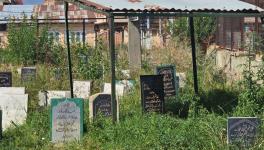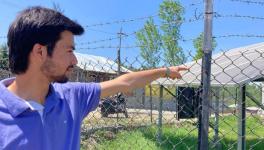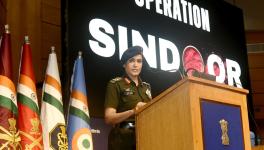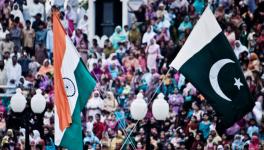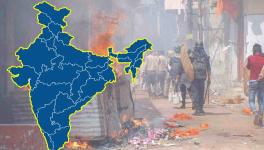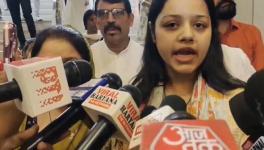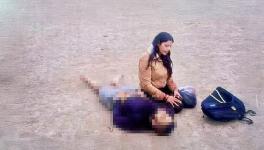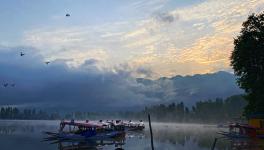A Writer Cannot Look Away from the Conflict of a Place
Life in the Clock Tower Valley (Speaking Tiger, 2021), the debut novel of Kashmiri journalist Shakoor Rather, is more than a love story. It is also a portrait of the uncertainty of life in Kashmir. Samar meets Rabiya in a matador taxi and instantly falls in love. In fewer than 200 pages, Rather surrounds the couple with the life sketches of people around them. Rather talks to Newsclick about why writers cannot look away from the conflicts a place or the “haunting grimness on the faces of its people”. Edited excerpts.
What made you write fiction and not a nonfictional account of life in Kashmir?
The fiction genre worked for me because the characters, plots, and settings helped me anchor difficult conversations about Kashmir. The narrative allowed me to work through sensitive and nuanced issues. Fiction provides the creative liberty to depict the world from a different perspective than is possible in non-fiction. Invented scenes constitute the sharpest commentary. They allow you to convey deeper feelings and the psyche of a character, helping the author connect with the reader emotionally and describe reality in a way that literal means cannot do. Effective communication means telling more than the ‘how’ and ‘why’ of events—literary elements like imagery, sarcasm, and symbolism.
How has your journalism informed your other writing?
I was born in a village. Later, my family shifted to a town where I did my schooling before settling in Srinagar, which gave me a multidimensional perspective on Kashmir and its society. I started writing about Kashmir’s social, political, and economic issues before shifting to science, technology, and environment reporting. However, I have never stopped writing about different aspects of life in Kashmir.
What kind of multidimensional perspectives do you think one must acquire to write a story on Kashmir? Are you in a unique position to tell this story?
Kashmir has diverse demography and geography. Kashmiri society is like a meta-text whose diverse territorial issues intricately inform the production and falsification of meanings. As a writer, one cannot look away from the conflict of a place and the haunting grimness on the faces of its people. However, being too focused on the outward could also mean losing touch with the inward. Due to this, we create for ourselves a metaphorical distortion. I think Kashmiris are finding their voice, not only because they believe their stories will be heard but also because their stories have been muffled in other media.
What is the significance of the temporal setting of your novel—a love story set in 2008 Kashmir?
I vividly remember the summer of 2008, also known as the “summer of discontent” in the Valley. It was a period of helplessness. All one could do was to sit inside the house and watch disturbing news flashing on the TV screens all the time. I absorbed myself in books to get through that phase. I realised that those summer memories had been etched in my brain. And later, when I was in Delhi, writing my first book, these were the first ideas that started flowing. That summer became the universe of the book.
Would you share what in particular of that summer had a long-lasting impact on you?
That summer marked a year of protests, curfews, and hartals in all of Jammu and Kashmir. I was in the final year of college, and there was a lot of uncertainty, political and otherwise. Personally, it was frustrating to sit at home and watch events unfold. A situation like that cannot pass without leaving its mark.
Why did you not write a full-on political commentary, even through fiction? Think Homeland Elegies by Ayad Akhtar.
Rather than a direct commentary on the situation in Kashmir, I wanted the readers to go on a journey with me through the lanes and by-lanes of old Srinagar, visit the kandurwans (bakery shops), the public spheres of Kashmir, travel in aged matadors—metaphors for uncertainty in the Valley—and revisit Kashmir’s history by rewinding the clocks of the Ghanta Ghar in Lal Chowk or meandering the banks of Nallah Maar, the canal that snaked through the old city till the early 1970s and was a major transportation route.
Life in the Clock Tower Valley resists the temptation to limit itself to the apparent topicality and the cliched expectations attached with any new work emerging from the Valley. The politics, the changes that regimes brought, the resultant miasma, the loss of ecological balance are certainly a much-discussed part of the novel. The politics of the place, though not openly paraded, looms large, somewhere in the background.
The “lost cow” chapter is quite intriguing. What was the political (or personal) motive to have this chapter in the book?
The “Lost Cow” has both a polemic and figurative meaning in the context of the situation in Kashmir. One incident that spurred this important chapter involved overhearing a dejected passenger in a dilapidated matador lament the loss of his cherished cow during a curfewed night in downtown Srinagar. While symbolism litters the pages of the entire book, the “Lost Cow” is more pertinently symbolic of many individual and collective losses that Kashmiris go through daily. I used it as a metaphor to represent the overall situation in the Valley.
Muhammad Nadeem (Mountain Ink), who has reviewed your book, says it “does not tell us anything a common Kashmiri doesn’t know…”. How would you respond?
It would be naive to think that things common to one person would be familiar to every reader. Many years back, when Basharat Peer’s ‘Curfewed Night’ was published, some people made the same argument: ‘Everybody in Kashmir knows about the events and stories in it.’ However, that book became momentous because it was the first documentation of such happenings in a published work.
Moreover, my book is not non-fiction. I never set out to tell people the facts and figures they would not know. I have looked at the day-to-day life of ordinary Kashmiris and their trials and tribulations. I dare not tell stories to which they could not relate.
Why is Rabiya silent in the book even though Samar is not the narrator? It seems her voice is compromised.
Rabiya is one of the most important characters in the book. I think the amount and type of her voice align with her character and personality. She didn’t necessarily have to be seen frequently throughout the novel to speak her mind. Moreover, I did not want the love story to overshadow the narrative. After all, the book is ‘Life in the Clock Tower Valley’, not ‘Love in the Clock Tower Valley’.
Would you agree your book is too brief for its vast cast of characters?
Some characters may have overpowered others, although that is also how life works. We tend to assign more weight to a few people than others for multiple reasons. I don’t think I wrote to convince the reader of any particular story. The intention was to ignite dialogue, a holistic conversation.
Has the book accomplished this in your view?
Life in the Clock Tower Valley is about Kashmir’s pristine past, grievous present, and uncertain future. Several books on Kashmir have addressed the conflict, but I endeavoured to talk about life amidst this conflict. In almost everybody’s life in the Valley, there is a whole lot of uncertainty, and I wanted that to be the underlying theme in the novel.
The book also talks about mundane issues, which could occur in other settings, but because of the conflict, the environment, and the kind of place Kashmir is, they become really significant there. I also mention environmental, social, and domestic issues that are discussed too little or hardly mentioned.
(Saurabh Sharma is an independent journalist.)
Get the latest reports & analysis with people's perspective on Protests, movements & deep analytical videos, discussions of the current affairs in your Telegram app. Subscribe to NewsClick's Telegram channel & get Real-Time updates on stories, as they get published on our website.









